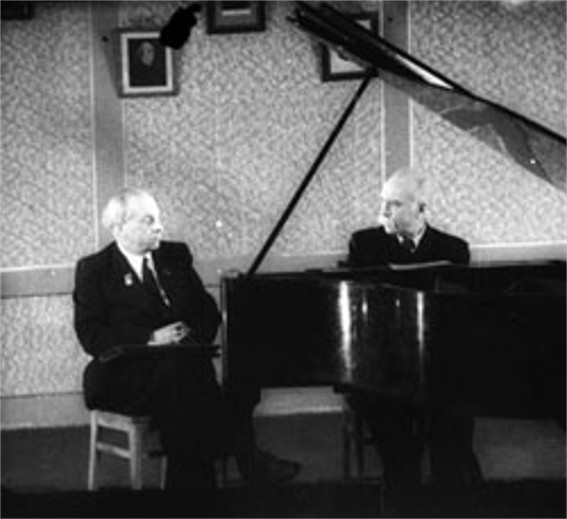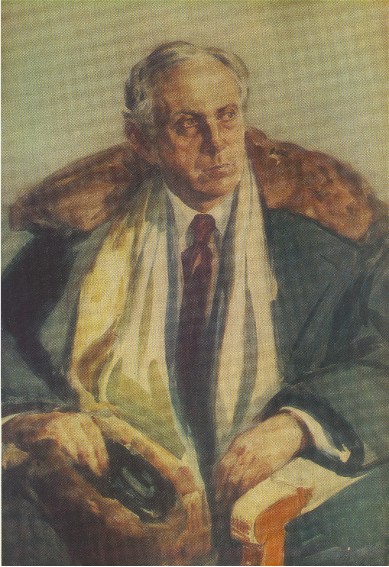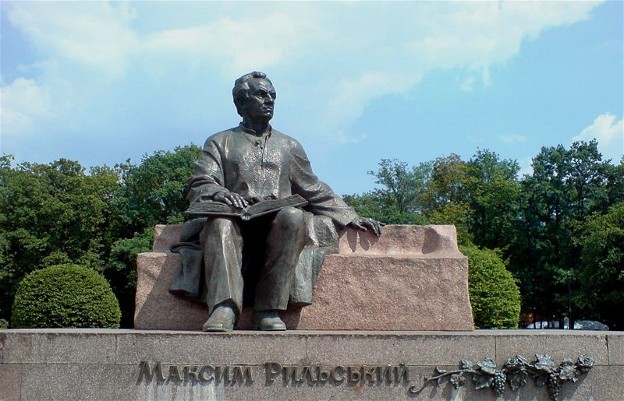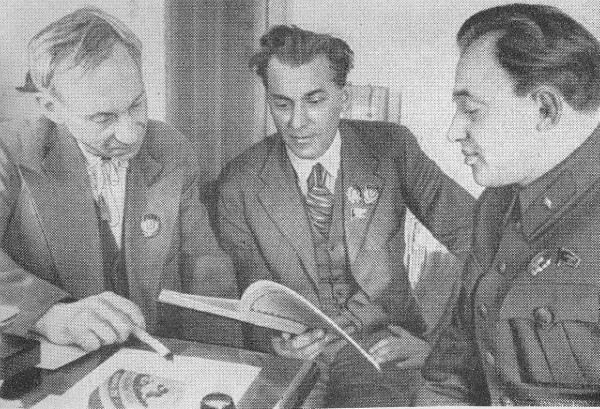Rylsky, Maksym
Rylsky, Maksym [Рильський, Максим; Ryl’s’kyj], b 19 March 1895 in Kyiv, d 24 July 1964 in Kyiv. Poet, translator, and community activist; full member of the Academy of Sciences of the Ukrainian SSR from 1943 and of the Academy of Sciences of the USSR from 1958; son of Tadei Rylsky. From 1944 until the end of his life he was director of the Institute of Fine Arts, Folklore, and Ethnography of the Academy of Sciences of the Ukrainian SSR. He studied at Kyiv University, initially in the medical faculty and later in the historical-philological faculty. Rylsky started to write early in life (he published his first poem in 1907), and by 1910 he had published his first youthful collection, Na bilykh ostrovakh (On the White Islands). The first mature collection to show his promise as an exceptional poet was Pid osinnimy zoriamy (Beneath the Autumn Stars, 1918). An abridged version, of half the original length, was published in 1926. The poetic talents of Rylsky reached full bloom with the publication of the collections Synia dalechin’ (The Blue Distance, 1922), Poemy (Poems, 1924), Kriz’ buriu i snih (Through Storm and Snow, 1925), Trynadtsiata vesna (The Thirteenth Spring, 1926), Homin i vidhomin (The Resonance and the Echo, 1929), and De skhodiat’sia dorohy (Where the Roads Meet, 1929).
Rylsky's lyric poetry grew out of the best achievements of Ukrainian poetry at his time, and out of his broad knowledge of world poetry, French writers in particular (especially the works of the Parnassians). He often used motifs and images from ancient mythology and adhered to classical forms, which practices linked him to the group of Neoclassicists. In many other respects, however, his philosophical and contemplative lyric poetry, with its wealth of moods and motifs of nature and of the individual becoming one with nature, did not fit the narrow definition of Neoclassicism. Rylsky's apolitical poetry provoked fierce attacks from official critics. He was arrested for a brief period in 1931, and then declared himself reformed and proclaimed his acceptance of the official Soviet view of reality in his collection Znak tereziv (The Sign of Libra, 1932). He alone of the Neoclassicists managed to live through the Stalinist terror and become one of the main poets in the ranks of the official Soviet versifiers. He became a member of the Party in 1943. In contrast to other official poets, however, he often expressed himself ambiguously in his eulogies of the Communist party, especially in those of Joseph Stalin.
From the time he became an official poet, Rylsky published over 30 books of poetry. The major prewar works were Kyïv (Kyiv, 1935), Lito (Summer, 1936), Ukraïna (Ukraine, 1938), and Zbir vynohradu (The Harvest of Grapes, 1940). During the war and the evacuation of Soviet Ukrainian leaders to Ufa he published, among others, the collections, Za ridnu zemliu (For the Native Land, 1941), Slovo pro ridnu matir (A Song about My Mother, 1942), Zhaha (The Thirst, 1943), and Mandrivka v molodist’ (Journey into Youth, 1944). His numerous postwar collections include Chasha druzhby (The Cup of Friendship, 1946), Virnist’ (Fidelity, 1947), Pid zoriamy Kremlia (Beneath the Stars of the Kremlin, 1953), Na onovlenii zemli (On the Reclaimed Land, 1956), Holosiïvs’ka osin’ (Autumn in Holosiieve, 1959), and V zatinku zhaivoronka (In the Shade of the Lark, 1961).
Throughout his literary career Rylsky also did many literary translations. An excellent example of his mastery of the art is his translation of Adam Mickiewicz's Pan Tadeusz. His translations from French are of a similarly high standard, from the classics of the 17th century to the poetry of Paul Verlaine, in particular the translations of Victor Hugo's Hernani, Edmond Rostand's Cyrano de Bergerac, and Voltaire's La Pucelle d'Orléans. He also translated William Shakespeare's King Lear and Twelfth Night, and Aleksandr Pushkin's Evgenii Onegin.
Like most of the Soviet poets of the interwar generation, Rylsky did not manage to revitalize his writing at the beginning of ‘de-Stalinization,’ and his work remained merely technically proficient versification. Rylsky achieved much, however, in his role of community activist and publicist and contributed greatly to the brief literary rebirth of the early 1960s. In his essays and articles of that period, which are collected in publications such as Vechirni rozmovy (Evening Conversations, 1962) and Pro mystetstvo (On Art, 1962), he carefully and tactfully, though unflaggingly, defended Ukrainian culture against the pressure of Russification. Rylsky was not so much an innovator in Ukrainian poetry as a practitioner of classic verse, the sonnet form in particular. He contributed more than any of his contemporaries to the development of the Ukrainian literary language. His selected works have been published as Poeziï (Poems, 3 vols, 1946), Poeziï (Poems, 3 vols, 1949), Tvory (Works, 3 vols, 1956), and Tvory (Works, 10 vols, 1960–2; 20 vols, 1983–90).
BIBLIOGRAPHY
Novychenko, Leonid. Povist’ pro poeta (Kyiv 1941)
Kryzhanivs’kyi, S. Maksym Ryl’s’kyi (Kyiv 1960)
Malyshko, Andrii. Slovo pro poeta (Kyiv 1960)
Nezabutnii Maksym Ryl’s’kyi: Spohady (Kyiv 1968)
Skokan, K. M. T. Ryl’s’kyi: Bibliohrafichnyi pokazhchyk: 1907–1965 (Kyiv 1970)
Novychenko, Leonid. Poetychnyi svit Maksyma Ryl’s’koho (1910–1941) (Kyiv 1980)
Novychenko, Leonid. Poetychnyi svit Maksyma Ryl’s’koho. Knyha druha (1941–1964) (Kyiv 1993)
Ivan Koshelivets
[This article originally appeared in the Encyclopedia of Ukraine, vol. 4 (1993).]
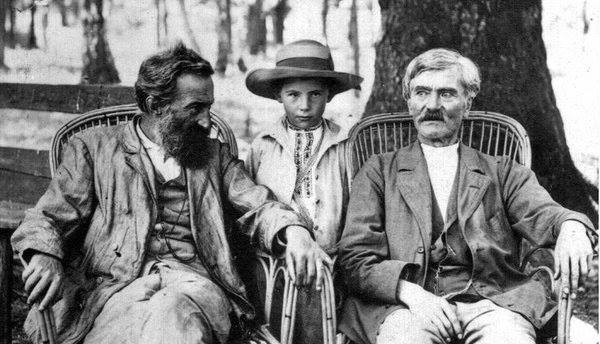
.jpg)
.jpg)
.jpg)
.jpg)
.jpg)

.jpg)
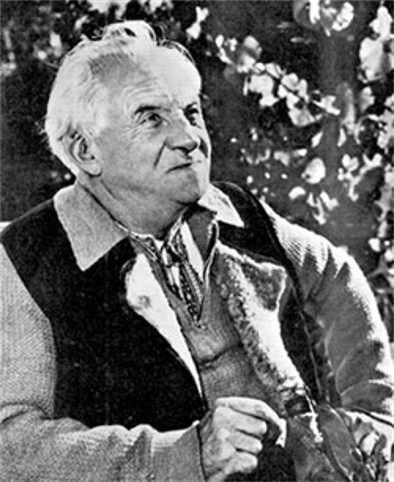
.jpg)
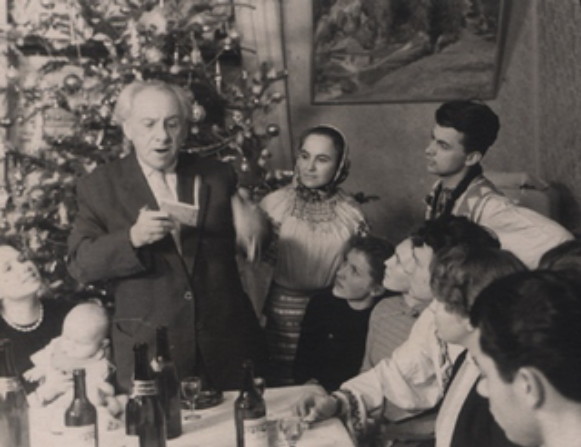
.jpg)
